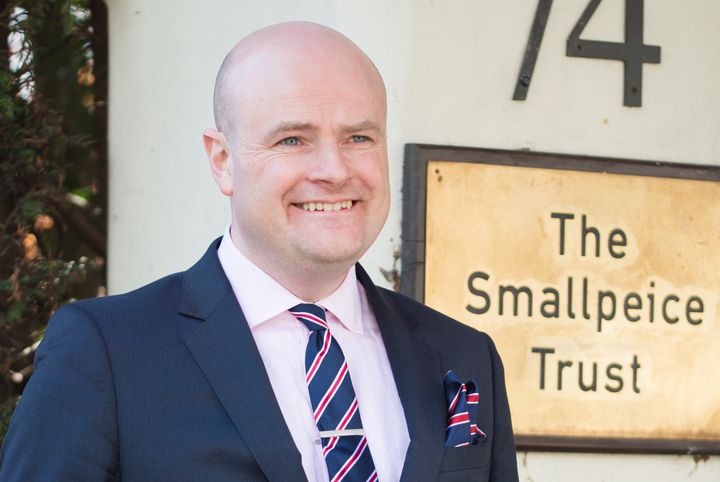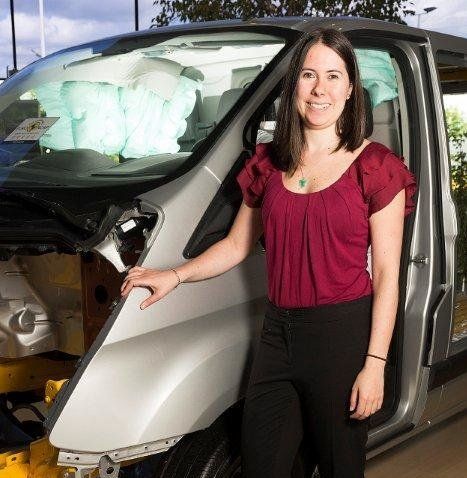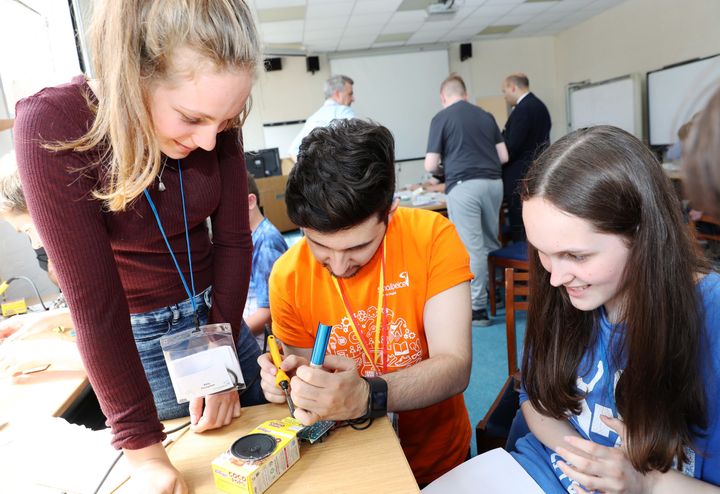
For 50 years, the Smallpeice Trust has been working to get more humans of both genders into STEM.
Its methods, attitude and objectives have all evolved over the years but now more than ever, its focus has been on battling the chronic inequality there is between men and women working in STEM (Science, Technology, Engineering and Mathematics) industries.
By focusing on engineering in particular we’re given a stark picture of the challenges ahead. In the UK just 9% of engineers are female and the UK has the lowest percentage of professional female engineers in Europe. It’s no coincidence then as a result of this the UK is suffering from a chronic skills shortage in STEM.
Over 64% of engineering employers have said that this shortage is a direct threat to their business.
Unlike many huge organisations or think tanks, Smallpeice isn’t trying to tackle this gender inequality by going direct to the workplace. Instead it’s looking much further ahead than that, it’s focusing on the next generations of engineers, the children and students who either want to work in STEM industries but don’t know how.
While it’s true that schools and industries must continue to inspire and educate girls around STEM, there is one area where education has to improve: parents.

“I’m the first in my family to go to university and at a personal level, science has changed my life completely, but it has all been luck.” explains Dr Kevin Stenson, CEO of Smallpeice.
He goes on: “My parents did the best that they could do but they didn’t know how to help me navigate from A to B.”
Dr Stenson’s anecdote is an important one because it raises a worrying point: If a boy has to rely on luck and yet is still be able to dominate an entire industry, imagine how much more difficult this task must be for a girl.
Speaking to Ford engineer and Smallpeice alumni Hannah Pearlman it’s clear that she also sees this as a major hurdle that needs to be overcome.
“I think one of the biggest problems we have now is that while kids are starting to get it, it’s actually getting the parents engaged and involved and understanding it because at that age kids will turn around and say: ‘I want to do maths, physics, design technology so I can do engineering’, and a lot of parents will still find that very intimidating.”

For Pearlman there are two clear ways into solving this, the first is reassuring parents that a career in a STEM industry is a good job and that it’s not as academically insurmountable as its reputation suggests. The second is fighting the worries that come from encouraging their daughter to enter an industry rife with such inequality.
“I’ve had parents come up to me and say: ‘Is my kid going to be OK going to an industry that’s only full of men’ and I’m sitting there thinking, it’s not really like that.” she explains.
To try and fight this, Smallpeice now runs a special course that’s for kids and parents. The course takes both parties through a standard course, from designing something to then building it, all the while making sure that parents who might not know much about STEM, have all the information they need.

This, says Stenson, is vital for one very key reason: “If you can never convince the parent that they should dare to consider a career in STEM it’s always going to be harder to convince the child. Your child is really bright, you should dare to imagine for them.”
Giving parents the opportunity to learn alongside their children is something that, while being essential to the values of Smallpeice, means that little bit more to him.
“As a father who has broken that cycle once,” he says “I am able now to help my children navigate towards worthwhile careers that they will find fulfilling.”
“The more that we can do to support teachers, the more that we can do to support students and the more that we can do to help parents in their decision making processes the better.”
While getting parents, schools and businesses engaged is vital, there is still last group of people that needs to be involved in this conversation: boys.
To stop the generational self-fulfilling prophecy not only do you need to educate parents but you have to educate the boys that will then go on to become the fathers of tomorrow.

“By increasing the number of female students on our courses it can show just as powerfully for boys that STEM is for girls too,” explains Stenson. “If you’ve got 50/50 split on a course then it becomes the norm, and that’s important.”
While these all sound like objectives yet to be achieved, Pearlman’s experiences working for both a huge organisation like Ford and through her mentorship programs at Smallpeice paint a picture of progress and positivity.
“I think it’s a really positive step that companies are getting engaged in this discussion,” she says, “To be more engaged with local communities, to be more engaged with diversity,”
“I can’t imagine 20 or 30 years ago that there was a company that would dedicate hours of their employee’s time to community service, whereas now I know certainly Ford at least does do this.”
Finally while you can energise all of these groups, ultimately it’s also about energising the girls themselves. And for Pearlman the key there is mentorship, both by bringing in female engineers to inspire young students during Smallpeice courses, and then just as importantly once they enter the workplace.
“It’s just useful to talk to people who have already been there before...” She explains, “Getting those people to inspire you and then making sure you have those people throughout your career to drive you forward.”
“I’ve got mentors who give back to me, and I give back to students and I have a couple of mentees myself as well. I think it’s so important to just keep driving more people in because honestly, I wouldn’t be here if I hadn’t had that support.”
